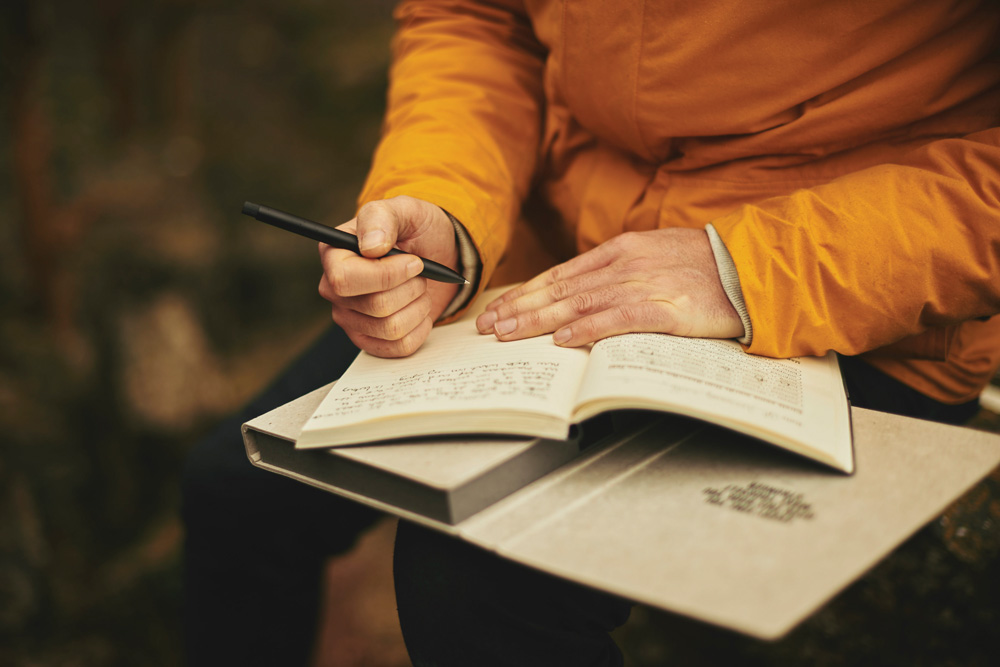
2017 Global Wellness Trends
Art & Creativity Take Center Stage
Yes, adult coloring books – but well beyond: from classical concerts to intensive painting classes at hotels, wellness retreats, spas and studios
An insistent refrain at the 2016 Summit, running like the notes of Mozart’s “Requiem” (which opened neuroscientist Dr. Claudia Aguirre’s keynote on how experiencing works of art positively impacts the brain) was the need for more creativity (art, music, literature, dance, etc.) at wellness retreats/spas – both for guests to experience and to “do.”
Historian David Clay Large’s fascinating keynote revealed that the connection between the “spa cure” and creativity (and famous artists) was historically incredibly strong: artists and thinkers, from Beethoven and Mozart to Twain and Marx, flocked to the grand spas of the late-18th to early- 20th centuries-great works were composed there-and musical performance and art were always the heartbeat of spa culture. Dietmar Mueller-Elmau’s talk (owner, Schloss Elmau, famed German wellness retreat that has kept the creativity-spa connection incredibly alive with 220 concerts a year) argued that “wellness culture” has become narrowly obsessed with ego and “self-optimization”, and needs to focus more on music, art and literature to take guests beyond the “cage of self”. (And Louie Schwartzberg’s extraordinary nature films, and multimedia artist SHA’s collective art piece painted by conference delegates, illustrated the many ways that art can be creatively connected to wellness.
If the arts have historically been in spas’ DNA (genetic material that’s been lost), the future is restoring a very different looking “mindbody” connection, with more creativity/arts programming a crucial future wellness trend. Because the medical evidence shows that destressing is the path to creativity, and that creative pursuits are key to mental wellness. So, it’s “back to the future”-with arts and creativity programming again taking their proper place on wellness’ center stage.
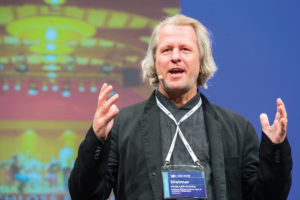
The Past: From the late 18th century to WW2, the connection between a spa/wellness“cure” and creativity was powerful. But then it was sadly lost, with “wellness” becoming all about chasing physical fitness and beauty.
The Future: Creativity and the arts (both as experienced and practiced) become once again central to wellness concepts–and at hotels, wellness retreats, spas and studios.
THE TREND
The Summit’s theme, “Back to the Future”, was designed to explore how the history of wellness/spa can provide informed blueprints for the future. Consider this historical reality: from the late 18th century until WW2, European spa destinations–from Bath in the UK to Baden-Baden and Bad Ems in Germany to Bad Gastein and Bad Ischl in Austria to Marienbad in Czechoslovakia-reached a level of popularity and prestige unknown in “spa history” before or since. These hot (water) spots attracted aristocrats, politicians and the rising middle-class in droves. And most strikingly, the connection between take the “spa cure” and creativity was powerful: geniuses like Beethoven,
Chopin, Dostoevsky, Freud, Goethe, Kafka, Liszt, Marx, Mozart, Nietzsche, Proust, Twain, Tolstoy and Turgenev flocked to spas for weeks (and months)–they composed books and operas there-gave performances-these celebrity artists created spa buzz–and musical performance, theater and art exhibitions were as central to the spa experience as taking the waters.
These oft-tortured artists certainly went for physical and mental health problems, and to hobnob with potential patrons, but they seemed to intuitively know what the medical evidence now tells us: stress is the creativity killer, and stress-reduction (thermal bathing, massage, time in nature) helps creative thinking flow. Just as spa “audiences” then seemed to know what the evidence also now tells us: experiencing music, art and literature has a proven, positive impact on mental health, and should be a much bigger component of any true “wellness cure.”
Professor David Clay Large’s talk showed that historically, spa culture was a creative/artistic culture (from his important new book, The Grand Spas of Central Europe: A History of Intrigue, Politics, Art, and Healing). And one might ask, what happened? How did “wellness” become all about chasing physical fitness and beauty at the expense of creative, artistic and intellectual pursuits and programs? A complex answer to be sure.
Well today, decades later, you can feel the boomerang just starting to curve back. With creativity and the arts (both as experienced and practiced) becoming once again central to wellness concepts–and at hotels, wellness retreats, spas and studios – in years ahead.
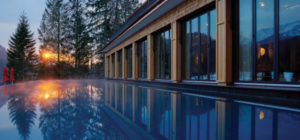
Image Source: Schloss Elmau via eightyfourrooms.com
WE WILL SEE MORE…
• Classes and programming that get people painting, drawing, writing, journaling, learning photography, singing, dancing (as creative expression, not just as workout) and musicmaking, etc. at hotels, wellness retreats, spas, and fitness studios. And without debating the line between “arts” and “crafts,” much more therapeutic making with one’s hands, used intentionally as meditative stress-reducer, like the rage for ceramics, knitting or weaving classes. Who-would-have-predicted trends like the surge in adult coloring books or “adult summer camps” show people’s desperate need to re-find that lost, creative (“crafty”) child. Accessible, (because simple) creative approaches like the coloring book will trend on, but the creativity programs will also head in more sophisticated directions.
• Art and live performance (music, readings, etc.) at hotels, wellness retreats, spas and fitness studios. Why have we, for instance, suffered so much banal spa “music” when we have thousands of years of sublime music to draw on? The trend toward “more performance” at wellness destinations currently finds its most powerful expression in the rage for mystical sound baths and new breeds of sonic, multi-sensory experiences and “ceremonies” at studios, retreats and spas–with star practitioners wielding Himalayan and crystal singing bowls, chimes, gongs, bells and tuning forks to create mind-and stress-melting concerts that accompany meditation, yoga, massages and bathing. But other types of art and performance will become more central to wellness destinations and experiences–whether classical violin or
multimedia art.
• Artists, writers, musicians and creative professionals turning to every form of stress-reduction–whether meditation, yoga, breathwork, exercise, thermal bathing, massage, time in nature–to kick-start the creative process. And turning to wellness retreats/spas/studios that package them handily as places where creative insights can best get accomplished. (This programming is becoming more standard at writers’ and artists’ retreats). And because “creativity” spans far more than composing “Requiem” or penning a great novel (it’s the application of imaginative solutions to all human endeavors), more “regular people” will seek these wellness approaches and destinations to spur creative breakthroughs about any challenge they face, whether in relationships or at work.
MEDICAL EVIDENCE: Stress is Creativity’s Enemy – And a Creative Life Is a Healthier Life
A raft of medical and neuroscience research show that stress is the biggest obstacle to creative thinking-and that stress-and cortisol-reducing, and serotonin, dopamine and alpha-brain-wave generating-approaches (whether meditation, massage, yoga, exercise) are clear paths to unlocking creativity. When we’re stressed, the brain channels resources to the primitive “survival mode” areas, away from brain regions associated with creativity and abstract thought. While it’s too complex to explain how many parts/processes of the brain play their part in creativity here,neuroscience shows that communication between the two lobes of the brain is key (i.e., whole brain activation, while stress builds “walls”)–and that creative breakthroughs come from a wandering mind that moves away from a problem we’re obsessing on, to different, undemanding tasks. Alpha brain waves–which happen when your brain is an idling state, whether daydreaming, practicing meditation, or doing aerobic exercise help creative thinking. And a potent creativity cocktail is boosting serotonin (you’re operating from sense of calm, not anxiety) and dopamine, again all boosted by yoga, meditation, massage and exercise. Various studies also show REM sleep is crucial to creative thinking, and that it’s also increased when we disconnect from technology, are in a happy mood, and spend time in nature. So, a wellness retreat is a natural, evidence backed creativity retreat.
A whole other raft of studies show the wide ranging impact that creative pursuits and “art therapies” (whether music, writing, dance, painting, ceramics, etc.) have on both physical and mental health: from significantly reducing depression and anxiety to findings that creative lives are longer lives. One review of 100 studies on how artistic/creative pursuits impact health can be found here: https://www.ncbi.nlm.nih.gov/pmc/articles/PMC2804629/
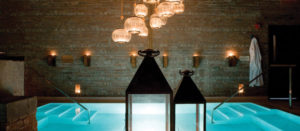
EXAMPLES: Creativity & Wellness Connections at Hotels, Wellness Retreats, Spas & Studios
Schloss Elmau: This “Luxury Spa Retreat and Cultural Hideaway” in a castle in Germany’s Bavarian Alps is the unrivaled example of a wellness retreat magnificently merged with musical and cultural programming. Creativity is in its 100-year-old soul: it opened in 1916 as a refuge for artists and writers (and as a concert hall), and since 2007 (when it opened as a spa resort, with a new retreat facility added in 2015) it has been feeding both mind and body in entirely unique and equal ways: bodies are nurtured at its five spas, one of the world’s largest hammams, their refreshing “Yoga Without Dogma” program, and a dizzying profusion of pools. The brain and creative soul are engaged by 220 concerts and performances each year (from world-class classical and jazz musicians, poets, writers) in its 300-seat concert hall. Not to mention two incredible libraries and the largest bookshop in any hotel, anywhere. And Schloss Elmau offers a model that other resorts might pay attention to (if not on such a grand scale!): it allows thousands of top musicians, writers and thinkers (and their families) to “play to stay” every year: they perform for stress-reducing downtime. (A heady, highcultural
destination…no wonder it was chosen as the site of the G7 in 2015.)
Few wellness retreats will build full-blown concert halls, and Schloss Elmau’s owner cautions that the music and art must be first class, and properties must have an authentic passion for what they’re undertaking. But now more are adding simpler, but still stirring, musical performances. The new Gainsborough Bath Spa Hotel (UK), in a famed 18th-19th century destination where “taking the waters” was always combined with a rich culture of theater and concerts, not only offers wellness seekers everything from ice grottos, salt rooms and Malay massage, its Roman bath circuit is experienced with classical music curated by Pump Room violinist, Robert Hyman. At Aire Ancient Baths (NYC) you can float in the magical, candlelit underground thermal pools serenaded by live flamenco guitar and Sufi flute.
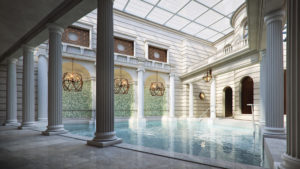
the Roman bath circuit is experienced with classical music curated by Pump Room violinist, Robert Hyman. Image Source: Gainsborough Bath Spa Hotel
Le Monastère des Augustins, “a historic haven of culture and wellness” (Quebec) marries comprehensive wellness programs (yoga, meditation, Pilates, spa) with a museum, creative workshops on everything from painting to embroidery, and ongoing concerts.
Revered destination spas, like Canyon Ranch (Tucson, U.S.) or Rancho La Puerta (Mexico), have long offered classes in creative arts: from sculpting, mandala drawing or Japanese Kumihimo braiding at the former, to the latter’s workshops on everything from painting to writing. But you can feel the creative menus inch towards equal billing with physical wellness: like at The Lodge at Woodloch (Poconos, Pennsylvania), using watercolor painting, drawing classes and intensive journaling workshops as paths to selfdiscovery. Or at Spa Village Tembok (Bali), where it’s all about immersion in indigenous arts, from traditional Lontar drawing to Balinese dance, even using guided meditation techniques to spark creativity.
Coloring Books…and Beyond: Adult–or “mindful”-coloring books have more than trended: 12 million were sold last year in the U.S. alone, and they’re becoming a fixture at hotels, wellness retreats and spas. They may seem like creativity “baby steps” but they’re helping many people break the creative ice. And there are so many examples: from the Costa Rica Marriott’s (San Jose) “Art Therapy” classes using coloring therapy to the Gladstone Hotel‘s (Toronto) “TGIF Adult Coloring” workshops with cocktails and music to Mandarin Oriental’s new, brand-wide “Digital Wellness” program, which uses coloring books, journaling and notecard writing in its spas.
But hotels and spas are heading well beyond the coloring book. Casa Madrona (Sausalito, California) interweaves creativity, culture and spa with its “Art of the Sea” package, including private art/painting lessons, tickets to museums, and spa treatments. And Kimpton Hotels are getting people painting: Hotel Monaco (Portland, Oregon) provides easels, brushes and paint at their evening wine hours, and Tideline Ocean Resort & Spa (Palm Beach, Florida) offers nights of painting under the stars.
Sound Baths & Multisensory Experiences: As noted, the uber-trendiest example of “more performance” in wellness is the profusion of sound baths and “aural ceremonies” at so many studios and spas–with practitioners orchestrating complex sonic and sensory “journeys” using everything from singing bowls to tuning forks. Examples include Miraval’s (Tucson, Arizona) therapists playing Himalayan singing bowls in
pools as guests float blissfully to Woom Center’s (NYC) multi-sensory “yoga concerts” which combine visual projections, diffused scents, and trippy sound experiences (from rain sticks to class members’ own vocal vibrations). Humans today certainly want their stressed-out minds blown. And an early (1990s) pioneer of more literal multisensory “sound baths” was the “Liquid Sound” experiences at Toscana Therme Spas (Germany, Austria): a multimedia-artist-designed experience where one floats in warm salt water, gently manipulated by therapists, with over-water light shows and underwater music turning the pool into a mind-melting concert hall.
A welcome twist on the trend is more actual artists designing multi-sensory wellness experiences, like Viennese artist Sha’s experiential “pods” (the AlphaSphere and Wolke 7 Cloud 9) that cradle people in warm, alpha-wave-driving cocoons of light, color, sound, music and vibration for outrageously relaxing art-wellness experiences (now at 100+ global spa and design hotels). Summit presenter and renowned futurist, Edie Weiner (CEO, president, The Future Hunters), argued that brain imaging shows that humans have far more than five senses, they have thousands-and wellness centers/spas haven’t even scratched the surface of impacting that sensory panorama. But they will, with virtual reality and haptic technologies (which deploy thousands of sensors that can deliver vibrations, touch, temperature and motion) on the march.
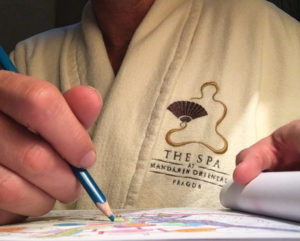
The Art Hotel: We’ve had wellness-branded hotels, and now more hotel concepts are putting art and creativity at their core. 21c Museum Hotels’ brand (7 Southeastern U.S. hotels, and more coming) is all about putting contemporary art into everyday life, and they’re packed with art, and offer performances, poetry readings, art tours and video lounges where they screen films and new media work. W Hotels is re-angling its brand squarely at the global creative set. For instance, the W Bali-Seminyak just unveiled “W Sound Suites”, with a private music studio and writer’s room so professional and amateur recording artists can lay down their tracks on the road (expected at W Hollywood, Barcelona and Seattle soon). The brand new, art-themed Renwick Hotel (NYC) has design elements like TV stands that look like easels, rooms filled with origami kits and drawing supplies, and special suites with easels, paint and canvases.
New models: Concepts are getting interesting. The new Augeo Art Gallery & Spa (Rimini, Italy) is a high-design wonder that combines an art gallery and spa in a unified concept (specifically to bring “creativity” and the “body” together). The gorgeous gallery space is on the first floor, while the gorgeous spa occupies the basement.
THE FUTURE
Creativity, art therapy and live performance have essentially been a “nice diversion” at wellness centers and spas. But creative programming will continue to take a more starring role. The intention has changed, as more people grasp how crucial creative pursuits are to true mental wellness–and as more people grasp the medical evidence indicating that so many wellness approaches (meditation, exercise, time-in-nature, and all forms of stress-reduction, like massage) are potent paths to creative insight. A stronger connection between creativity and wellness is the future, but it’s also an uncanny return…to the long history when artists and thinkers flocked to spas, and spas had culture at the heart of their experience.
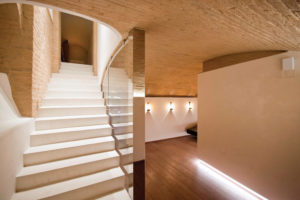
Copyright © 2016-2017 by Global Wellness Summit.
If you cite ideas and information in this report please credit “2017 Wellness Trends, from the Global Wellness Summit.”
For more information, email [email protected].
